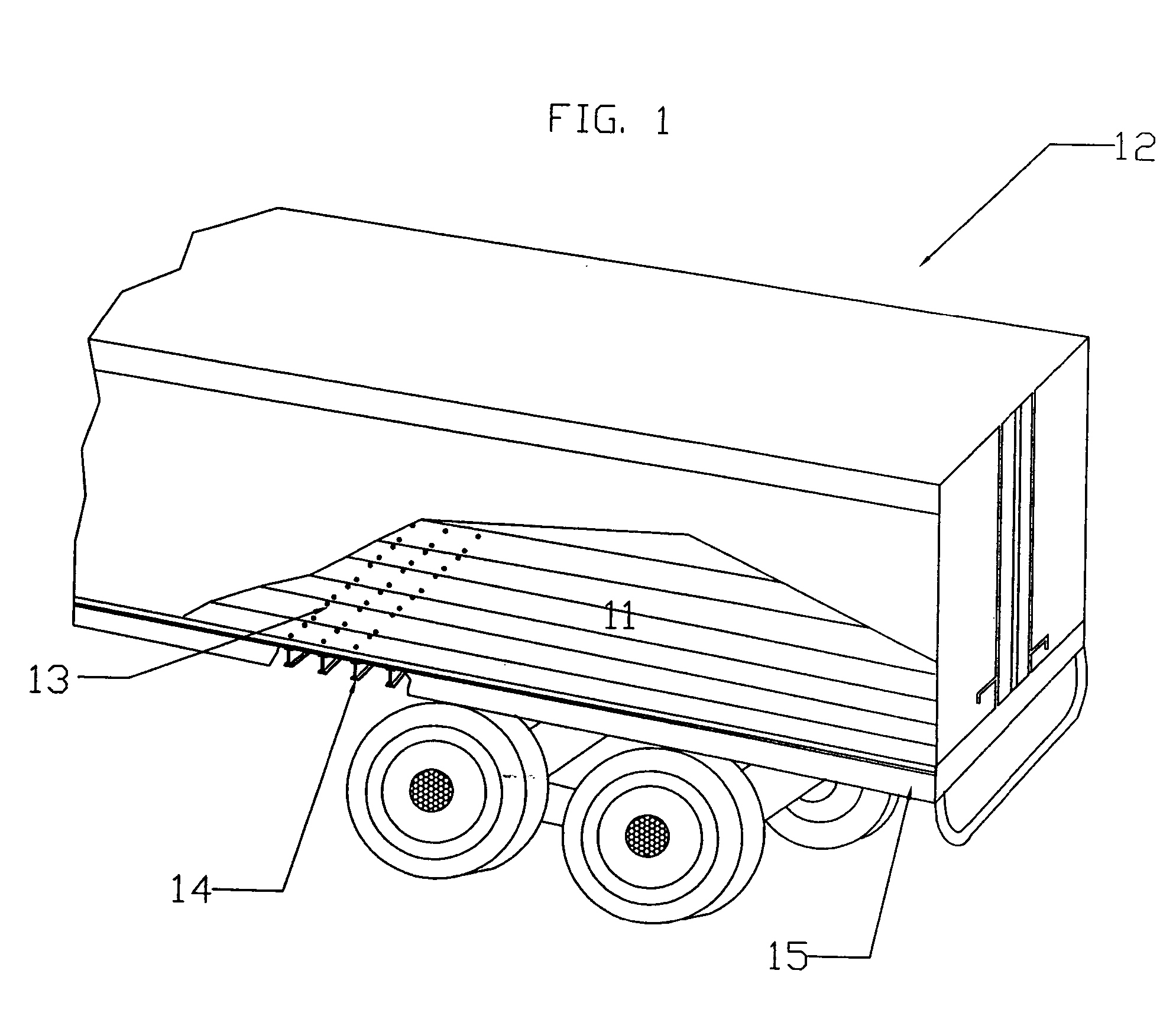Trailer flooring with hotmelt coating
a technology of hotmelt coating and trailer flooring, which is applied in the direction of transportation and packaging, cellulosic plastic layered products, synthetic resin layered products, etc., can solve the problems of easy to see gaps at the strip-end joints, water from the roads is known to leak into the trailer, and the effect of high production speed and low cos
- Summary
- Abstract
- Description
- Claims
- Application Information
AI Technical Summary
Benefits of technology
Problems solved by technology
Method used
Image
Examples
Embodiment Construction
[0032] Conventional wood flooring 11 for over-the-road truck trailers 12 such as that shown in FIG. 1 is normally manufactured with hardwoods such as ash, aspen, elm, yellow-poplar, and preferably oak, maple, birch, beech and the like, although softwoods such as Douglas fir and spruce could be employed. The green lumber used as a starting material in such manufacture is suitably dried in kilns under controlled conditions. The dried lumber is then sawed into strips 22 of rectangular cross-section and defective portions are eliminated by cross cutting the strips. During the cross-cutting process, “hooks”24 are formed at the ends of the lumber strips (see FIG. 4b). Hooks are shown as an illustrative example. Alternatively, laps, fingers, bevel or other shapes could be formed at the strip ends. The relatively defect-free lumber strips are coated on their vertical sides or edges 25 with an adhesive such as urea-melamine formaldehyde or polyvinyl acetate. The uncured glue coated lumber st...
PUM
| Property | Measurement | Unit |
|---|---|---|
| Temperature | aaaaa | aaaaa |
| Fraction | aaaaa | aaaaa |
| Temperature | aaaaa | aaaaa |
Abstract
Description
Claims
Application Information
 Login to View More
Login to View More - R&D
- Intellectual Property
- Life Sciences
- Materials
- Tech Scout
- Unparalleled Data Quality
- Higher Quality Content
- 60% Fewer Hallucinations
Browse by: Latest US Patents, China's latest patents, Technical Efficacy Thesaurus, Application Domain, Technology Topic, Popular Technical Reports.
© 2025 PatSnap. All rights reserved.Legal|Privacy policy|Modern Slavery Act Transparency Statement|Sitemap|About US| Contact US: help@patsnap.com



